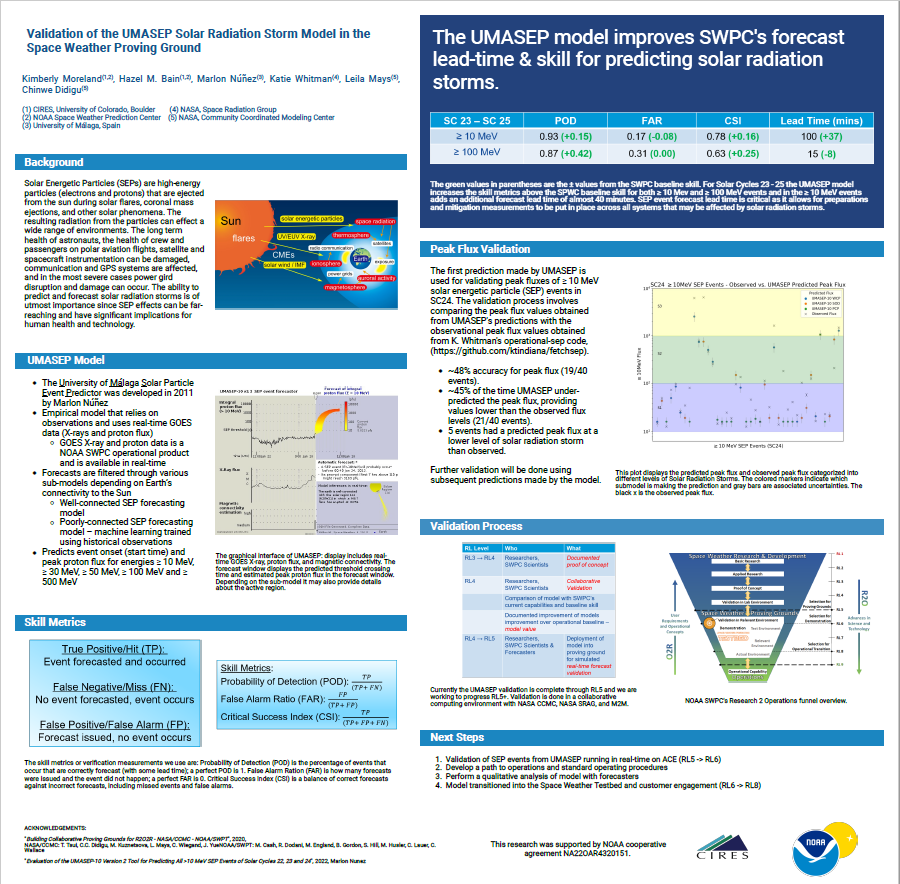Authors: Kimberly Moreland(CIRES, University of Colorado, Boulder; NOAA Space Weather Prediction Center), Hazel M. Bain(CIRES, University of Colorado, Boulder; NOAA Space Weather Prediction Center), Marlon Núñez(University of Málaga, Spain), Katie Whitman(NASA, Space Radiation Group), Leila Mays(NASA, Community Coordinated Modeling Center), Chinwe Didigu(NASA, Community Coordinated Modeling Center)
The study of space weather is crucial for ensuring the functionality of satellites and other technologies in space. One aspect of space weather that can cause significant damage is radiation storms, which are bursts of high-energy particles that can disrupt electronics and harm astronauts. Accurate forecasting and modeling of such events is crucial for mitigating their impact. Working in a collaborative space weather proving ground with NASA CCMC, M2M, and SRAG we compare the model’s predictions with observational data and against NOAA SWPC’s historical event forecasts to assess the models skill metrics and forecast lead times. The evaluation and validation of the UMASEP solar radiation storm model is a critical step in the readiness level process and future operational implementation of the model in the Space Weather Forecast Office.

